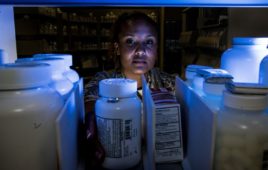The Healthcare Coalition for Emergency Preparedness (HCEP) was formed in an effort to raise awareness and educate people about often overlooked issues in plans to maintain healthcare facility operations during a crisis and develop efficient methods to reduce healthcare costs.
As such, the HCEP has repeatedly requested the Centers for Disease Control and Prevention (CDC) to clarify standards related to healthcare facility protocols for the safety of workers, specifically related to the disinfection and transportation of medical waste. As spelled out in a recently released fact sheet, the HCEP believes CDC standards should follow international standards in regards to the handling and disposal of medical waste, to protect healthcare workers as well as the public at large.
HCEP is pleased that CDC has now clarified Ebola waste as a Category A infectious material, which the Department of Transportation (DOT) determines is capable of posing an unreasonable risk to health, safety, and property when transported in commerce, and should not be treated like
normal regulated medical waste (RMW).1
Which CDC standards must be upheld when cleaning and disinfecting cleanrooms and controlled environment facilities?
The CDC is the national public health institute of the United States that is a federal agency under the Department of Health and Human Services (HHS). The CDC recommends hospitals to be prepared to follow certain infection control and worker safety protocols.
CDC’s recommendations (guidelines) for infection protection include avoiding contact with blood and bodily fluids of an infected person and not handling any items that may have come in contact with an infected person’s blood or body fluids.
Like the CDC, World Health Organization (WHO), and other health policy experts, the Coalition recognizes and agrees that the practice of inactivating cultures and stocks of microorganisms onsite during medical waste treatment is a best practice.
It is important to acknowledge and remember that international Ebola infection control standards should be followed precisely. You cannot pick and choose which regulations to follow; all must be upheld.
Can you talk a bit about personal protective equipment (PPE) and personnel procedures?
With healthcare workers on the front lines in the battle to contain Ebola, the need for proper personal protective equipment and infection control protocols is paramount. We know that there is not much information and research on disease transmission in the healthcare setting,
including the potential for infectious particles to be suspended in the air around a symptomatic patient. Thus, it only seems appropriate to adopt more conservative measures to protect healthcare providers.
What must the CDC do in order to contain further outbreak of Ebola in the USA?
Properly handling and disposing of Ebola waste is an often-misunderstood danger and public risk that we must responsibly and realistically address if we are to implement a complete “creation to sterilization” infection control process on-site where such patients are treated. In essence, it is vital that on-site sterilization of Ebola waste be performed before it is removed from the facility. Likewise, liquid waste must be disinfected before it is put into a municipal sewer system. Utilizing autoclave sterilization and bleach solutions works best, as the CDC notes.
We hope that Congress, along with the CDC, National Institutes of Health (NIH), Assistant Secretary for Preparedness and Response (ASPR), medical trade associations such as the American Hospital Association (AHA), State and County Health Officials, and HCEP, can all work cooperatively toward implementing simple, effective solutions using readily available technologies to implement appropriate protocols, establish designated treatment centers, and utilize the best American and international guidelines regarding infection control procedures and preparedness in our hospitals.
Here are a few simple solutions that the CDC can ensure are implemented in a hurry: utilize mobile triage centers; establish protocols for patient movement; disinfect solid and liquid waste on-site and as close to the source as possible; and deploy mobile waste sterilizers to medical centers. We should also rout patients to designated health care facilities that have the proper protocols, highly trained staff, and necessary bio-containment units to treat and contain Ebola and similarly infectious, lethal diseases.
References
1. http://www.cdc.gov/vhf/ebola/hcp/medicalwaste-management.html
MaryBeth DiDonna is Managing Editor of Controlled Environments.
This article appeared in the November/December 2014 issue of Controlled Environments.



